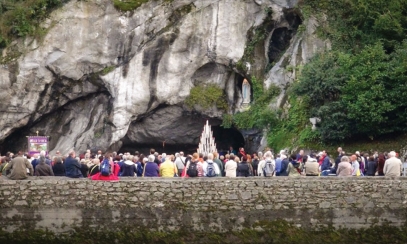A baroque pope?
Pope Benedict XVI
Pope Benedict XVI
After the death of Pope John Paul II, and before the conclave to elect his successor, the College of Cardinals participated in a General Congregation, a series of daily meetings in which they discussed matters needing immediate attention as well as the general state of the church. It was a setting in which the cardinals shared their positions on where the church should be heading in the light of where it had been in the recent past.
During one of those sessions a number of cardinals based their thinking on the church’s canon law. This prompted Cardinal Ratzinger to remark, “We know what canon law says, but what should our pastoral response be?” This must have caused some of the cardinals to sit up and take notice.
Cardinal Ratzinger, now Pope Benedict XVI, hails from Bavaria, a land steeped in Baroque art, music and architecture.
Baroque was a style adopted by the church in her counter-reformation movement. Its form celebrates the glory of God through an exaltation of all that is human – taking what is dissonant, complex and convoluted in our human nature and shaping it into an overall balanced beauty. It is the chief artistic expression of Christian humanism. It nurtured young Joseph Ratzinger during his formative years.
The church has a rich tradition in the use of symbols, something Pope John Paul II employed to great effect. Clearly, Pope Benedict XVI is following in that path, using symbols to express his vision of where he hopes to lead the church during his pontificate.
Pope Benedict’s relationship with the media is noteworthy. Following his meeting with governmental representatives to the Vatican, his second group meeting was with more than 1,000 media representatives. He openly and gratefully thanked them for their efforts during the final days of Pope John Paul’s life and the days after his death. He also acknowledged their coverage of the activities of the church surrounding his own election as bishop of Rome. I am hopeful that local bishops and pastors will follow his example and work more closely and openly with media representatives. Can we truthfully say the media are hostile to the church?
Pope Benedict has a faith that dares to walk nakedly before doubt and disbelief in order to discover the truth of what it means to be a Christian. His words and actions are not fear-based. He is not taking the church into isolation; he is not insulating himself, or the church he guides, by the use of condemnations and harsh legalities. Evidently, he truly believes that “God did not send his Son into the world to condemn the world, but that the world might be saved through him.” (John 3:17)
Do we?



